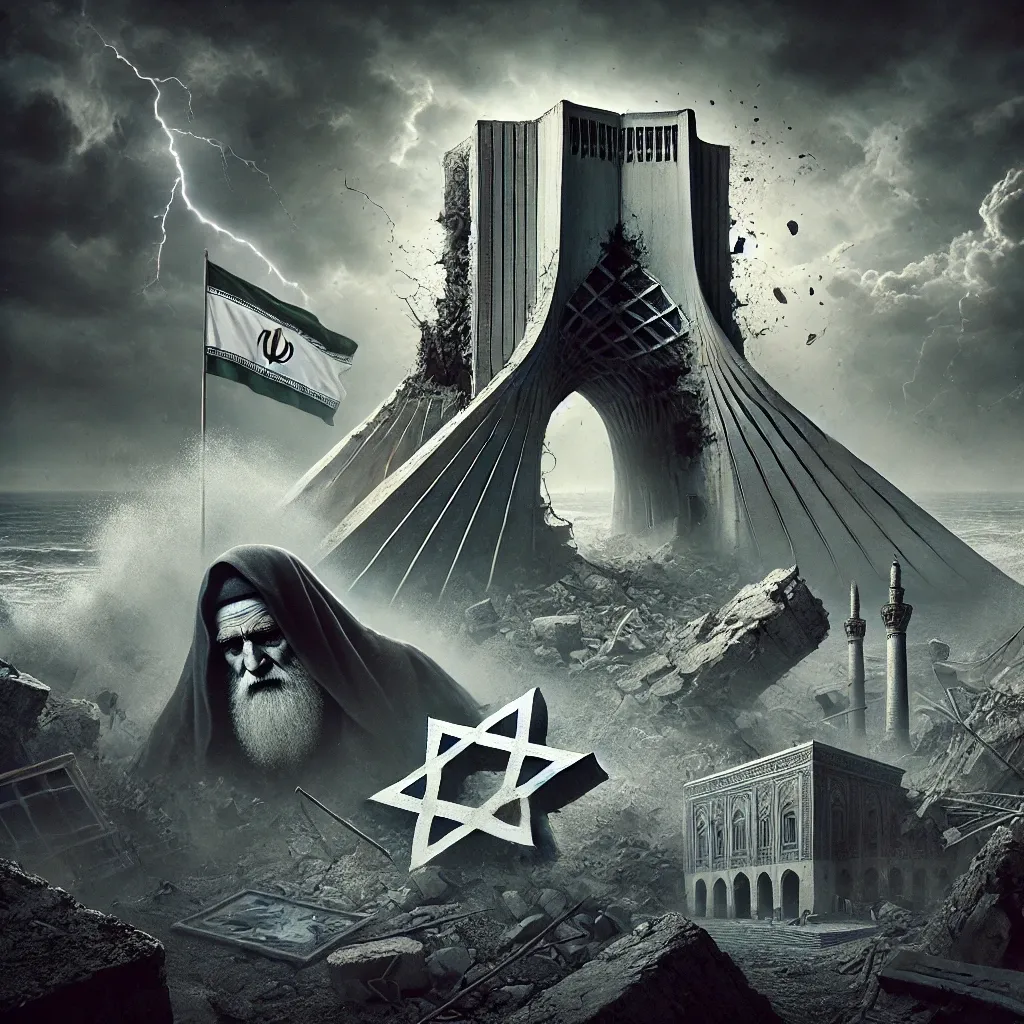

By Dr. Tim Orr
I can still picture myself as a 10-year-old, watching Walter Cronkite on the evening news, counting the days Americans were held hostage during the Iranian Revolution. Decades later, after the seismic events of October 7, I finally picked up Khomeini’s manifesto of an Islamic government in Iran, Islamic Government: Governance of the Jurist. In it, he boasted of Islam’s inevitable rise over the West. But now, in 2024, Khomeini’s grand vision has unraveled. The Iranian regime teeters on the edge, its downfall inevitable, though the timing remains uncertain. History will remember Khomeini not as a revolutionary but as an arrogant demagogue—an evil dictator whose tyranny was nothing more than the product of human arrogance, masquerading as the will of God.
Central Tennet of Khomeini's Vision
Ayatollah Khomeini’s concept of Wilayat al-Faqih (The Guardianship of the Jurist) is a central tenet of his political thought, which he articulated in his work Hukumat-e Islami (Islamic Government). The doctrine asserts that in the absence of the Imam al-Mahdi—the last in a line of infallible imams in Shia Islam, who is believed to be in occultation—there needs to be a legitimate Islamic authority to govern the Muslim community.
Khomeini believed that this leadership role should be filled by a qualified Islamic jurist (faqih), who is well-versed in both Islamic law (sharia) and religious jurisprudence. He argued that the Islamic community cannot be left without a leader on earth, as this would lead to chaos, injustice, and deviation from the principles of Islam. For Khomeini, governance by an Islamic jurist ensures that the laws of Islam are properly implemented and that the state remains faithful to the moral and spiritual goals of the religion.
Khomeini's idea marked a significant departure from traditional Shia thought, which tended to avoid direct involvement in politics. He argued that a faqih could govern in place of the hidden imam and act as his representative on earth until the imam’s return. This governance ensures the continuity of Islamic principles and the protection of the Muslim community from secular or unjust rule.
Wilayat al-Faqih became the basis for the political structure of the Islamic Republic of Iran, where the Supreme Leader (the faqih) holds ultimate authority over both religious and political matters. Khomeini's doctrine not only justified the necessity of an Islamic state but also centralized the authority of religious scholars in the governance of such a state.
 Dr. Tim Orr's BlogDr. Tim Orr
Dr. Tim Orr's BlogDr. Tim Orr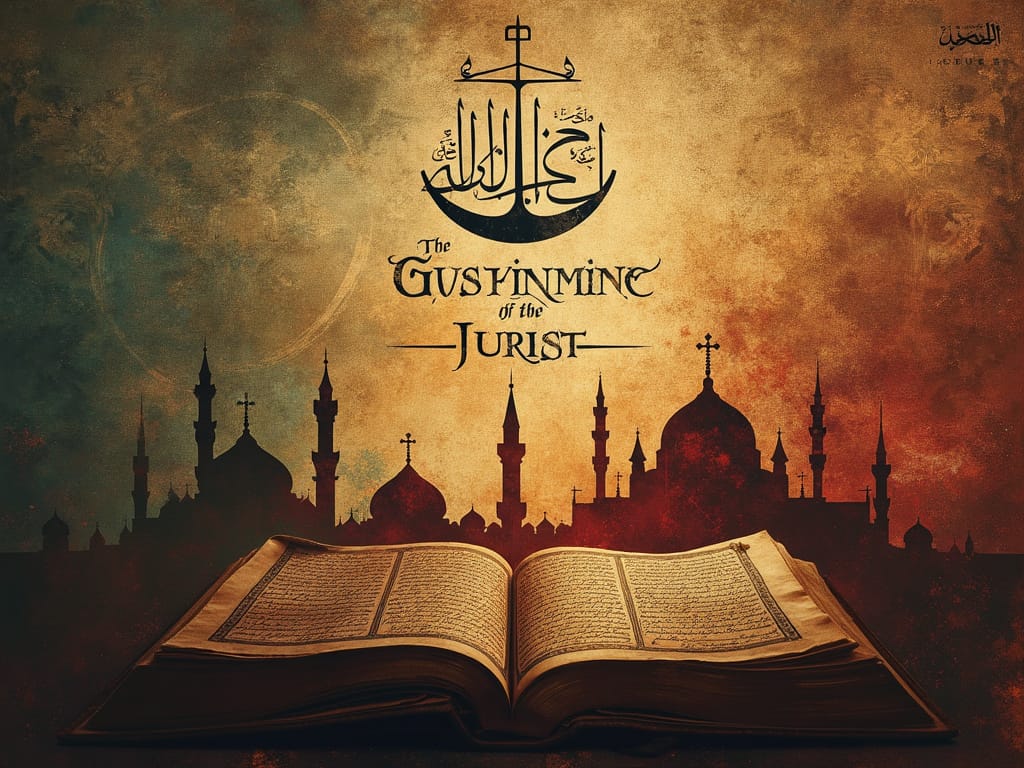
Khomeini Siezes Power
Shortly after Khomeini seized power, his regime rapidly descended into a brutal period of repression. Ebrahim Raisi, the infamous "Butcher of Tehran," was appointed by Khomeini to head the Revolutionary Courts. Raisi spearheaded mass executions, targeting political opponents, former officials of the Shah's regime, and anyone suspected of counter-revolutionary activity. During the first few years of Khomeini’s rule, thousands were executed or imprisoned as the regime solidified its grip on power through a campaign of fear and violence, marking the early years of the Islamic Republic with bloodshed.
Khomeini’s revolutionary vision for Iran, as outlined in his book was an ambitious attempt to reshape the political and religious order of the Muslim world. Khomeini’s core premise was that an Islamic government led by clerics would bring justice, economic equality, and moral leadership to Iran, eventually liberating the Muslim world from Western imperialism and eradicating the influence of Israel. His vision was framed within a rigid theocratic system that centralized power under clerical authority, and its geopolitical aims were built on a foundation of antisemitism, which Khomeini used to rally support for his revolution. More than four decades later, Khomeini’s grand experiment has failed, and this failure has global repercussions.
The collapse of Khomeini’s vision is not just an internal crisis for Iran; it reveals the broader contradictions inherent in political systems that combine religious absolutism with authoritarian governance. Iran, once positioned as the vanguard of the global Islamic revolution, is now a country in disarray—isolated internationally, plagued by economic mismanagement, and facing growing internal dissent. This article will delve deeply into why Khomeini’s vision has unraveled and why it matters in today’s geopolitical context.
 Dr. Tim Orr's BlogDr. Tim Orr
Dr. Tim Orr's BlogDr. Tim Orr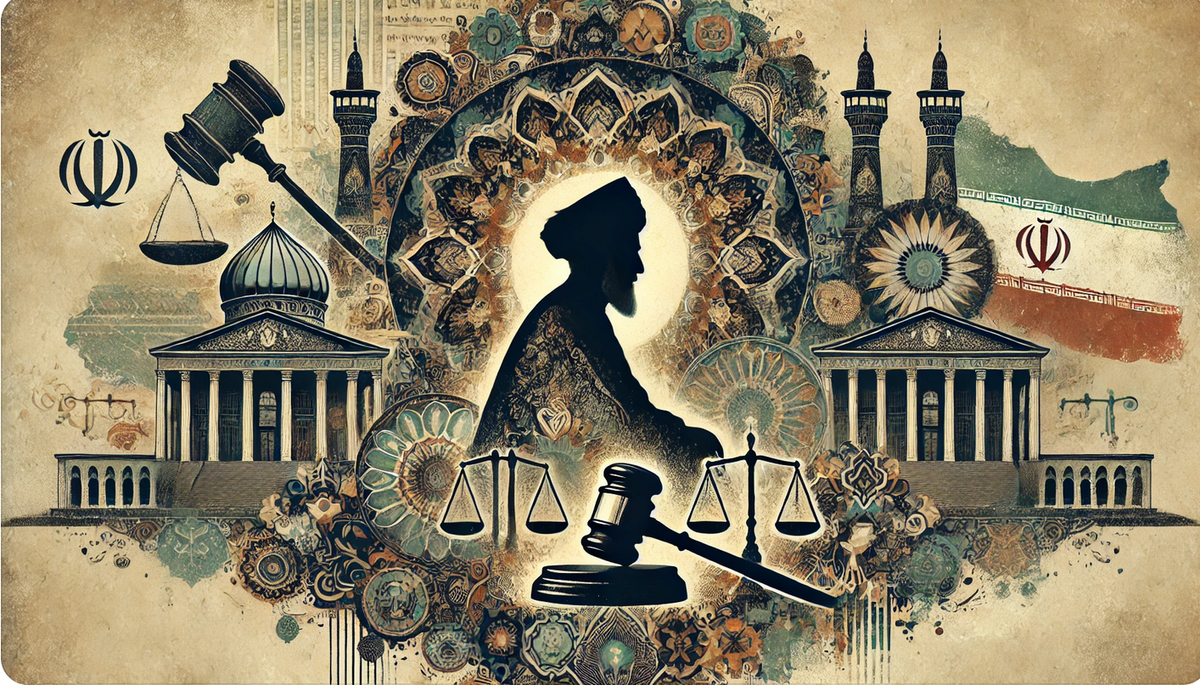
The Modern Relevance of Khomeini’s Failure
Khomeini’s plan was not simply a domestic political experiment but a revolutionary ideology that sought to inspire a global movement. Iran’s regime, as conceived by Khomeini, was meant to lead the Muslim world by example, showing that a return to Islamic governance could restore dignity, justice, and power to the ummah. However, the deepening failures of this system have instead turned Iran into a cautionary tale. Today, Iran’s leaders face an unprecedented legitimacy crisis, and the regime’s growing international isolation, domestic unrest, and inability to destroy its primary foreign adversary, Israel, suggest that Khomeini’s vision has failed comprehensively.
Understanding Khomeini's influence is crucial for comprehending broader Middle Eastern dynamics, particularly as countries in the region grapple with the tensions between political Islam, authoritarianism, and modern governance. The story of Khomeini’s failed vision offers valuable lessons on the limitations of religious absolutism as a governing model.
Khomeini’s Vision: A Theocratic Utopia Based on Antisemitism and Martyrdom
At the core of Khomeini’s vision was the belief that a divinely guided Islamic jurist could create a society based on absolute adherence to Sharia law. In Hukumat-e Islami, Khomeini argued that secular governance was inherently corrupt and incapable of ensuring justice. Only a government led by a jurist (Faqih) could guarantee the preservation of morality, social order, and justice (Khomeini, 1981). This jurist would have absolute authority, ruling on religious, legal, and political matters.
Khomeini’s ideological framework was not limited to Iran’s borders. He envisioned Iran as the center of a global Islamic revolution, leading the Muslim world in the fight against Western imperialism, with Israel as its primary adversary. For Khomeini, Israel represented more than a geopolitical foe; it was the embodiment of evil and a colonial outpost of the West that had to be destroyed. Antisemitism became a crucial part of his revolutionary rhetoric, used to unify Muslims against a common enemy. He consistently framed Israel as a satanic force and positioned martyrdom as the ultimate form of resistance against tyranny. Through this narrative, Khomeini established a culture where martyrdom for the cause of Islam was glorified and seen as a path to victory.
Yet, as we will see, both the regime's reliance on antisemitism and its martyrdom narrative have played a significant role in the unraveling of Khomeini's ideology. These themes, once used to galvanize support, have ultimately backfired, undermining both Iran's foreign policy and its domestic stability. In the following sections, I will present ten reasons why the regime's eventual collapse now appears inevitable.
Support Tim on Patreon
1. The Rise of Christianity: A Stark Rejection of Khomeini’s Theocracy
Perhaps the most compelling evidence of Khomeini’s failure lies in the explosive growth of Christianity within Iran—a country where conversion from Islam to Christianity is punishable by death. At the time of the 1979 revolution, there were fewer than 500 known Christian converts from Islam. Today, that number has grown to over one million, with most of these converts practicing their faith underground due to the severe persecution they face (Garrison, 2014).
David Garrison’s research on the spread of Christianity in the Muslim world highlights this transformation as one of the most remarkable shifts in the religious landscape of Iran. The underground house church movement, despite the Iranian government’s attempts to crush it, continues to grow rapidly. This phenomenon reflects a spiritual revival and a deep disillusionment with the Islamic Republic. Many Iranians, particularly the younger generation, have turned to Christianity as an alternative worldview—one that offers hope, forgiveness, and personal freedom, in stark contrast to the repression and corruption they associate with the regime (Garrison, 2014).
The rise of Christianity in Iran represents more than just a religious shift; it is a profound ideological rebuke of Khomeini’s vision. Despite the regime’s efforts to impose Islamic law and maintain strict control over religious life, millions of Iranians are turning away from Islam. This rejection of the faith that legitimizes the Islamic Republic calls into question the very foundation of the theocratic state.
2. The Widespread Rejection of Islam: A Crisis of Faith for the Islamic Republic
Beyond the rise of Christianity, there has been a widespread rejection of Islam itself among the Iranian population. A 2020 survey conducted by GAMAAN (Group for Analyzing and Measuring Attitudes in Iran) revealed that 47% of Iranians now identify as having “no religion,” while only 32% still identify as Shi’a Muslims (GAMAAN, 2020). This is a startling statistic for a regime that claims divine authority through Twelver Shi’ism.
This crisis of faith is a direct indictment of the regime’s legitimacy. Khomeini’s vision relied on the assumption that Iran would be a bastion of Islamic devotion, a model for the rest of the Muslim world. However, the Islamic Republic’s failure to deliver on its promises of justice, prosperity, and moral leadership has led to mass disillusionment. The younger generation, in particular, is increasingly secular, with many viewing Islam as inextricably linked to the regime’s corruption, repression, and economic mismanagement.
These trends manifest in various ways throughout Iranian society. Mosque attendance has plummeted, especially among young people, and the visible markers of religious observance—such as the wearing of the hijab—are often ignored in private settings. Social media platforms, particularly Instagram and Twitter, are filled with expressions of frustration, atheism, and secularism. This growing divide between the regime’s religious ideals and the realities of Iranian life underscores the failure of Wilayat al-Faqih to maintain religious legitimacy.
3. Growing Domestic Opposition, Led by Women
The role of women in challenging Khomeini’s vision is particularly significant. His version of Islamic governance was deeply patriarchal, subjecting women to discriminatory laws under the guise of Islamic morality. Women were required to wear the hijab, were denied certain legal rights, and were systematically marginalized in public life. However, women have become the leading voices of dissent against the regime in recent years.
The 2022 protests, sparked by the death of Mahsa Amini—a young woman arrested by the morality police for allegedly violating Iran’s strict dress code—became a turning point in the country’s history. Iranian women took to the streets in unprecedented numbers, defying the regime by publicly removing their hijabs, cutting their hair, and leading protests calling for the downfall of the Islamic Republic. Their protests were not just about the hijab; they represented a rejection of the entire system of Wilayat al-Faqih, which has sought to control every aspect of women’s lives for over 40 years (Kar, 2022).
The women-led movement in Iran has captured global attention, with slogans like "Woman, Life, Freedom" becoming rallying cries for broader social justice. Despite the regime’s brutal crackdowns, women continue to lead the charge against Khomeini’s oppressive order, embodying the broader dissatisfaction that millions of Iranians feel toward the regime’s failures.
4. Economic Mismanagement: The Failure of Wilayat al-Faqih
One of the key promises of Khomeini’s revolution was economic justice, but Iran today faces severe economic hardships, including rampant inflation, high unemployment, and crippling international sanctions. The regime’s economic mismanagement has only worsened these problems, as billions of dollars have been funneled into foreign military interventions in Syria, Lebanon, Yemen, and Iraq while Iran’s economy crumbles under the strain (Alfoneh, 2020).
Khomeini's system has proven incapable of managing a modern economy. Iran’s Revolutionary Guard Corps (IRGC) controls vast sectors of the economy and the clerical elite benefit from corrupt financial practices through religious foundations (bonyads) that enrich the few at the expense of the many. Meanwhile, ordinary Iranians struggle with rising prices, shortages of basic goods, and a lack of job opportunities. This growing economic inequality and the regime’s inability to address it have contributed to widespread unrest.
Khomeini’s promise of an economically just society has been exposed as a lie. The Iranian people have become increasingly desperate, as evidenced by the frequent protests over economic conditions, and the regime’s focus on expanding its regional influence has only deepened the domestic crisis.
5. Corruption Among the Clerical Elite
Khomeini envisioned a government led by clerics ruling justly under divine guidance. In reality, his vision has bred systemic corruption within the clerical elite. Rather than serving as moral leaders, the clerics have become deeply entangled in the regime’s corrupt power structures, enriching themselves while ignoring the people's needs (Vaez & Sadjadpour, 2021).
The extent of corruption within the Iranian government is staggering. The IRGC, in partnership with influential clerics, controls key industries, siphoning off wealth from state-owned enterprises and religious foundations. This has fostered a culture of greed and self-interest that starkly contrasts Khomeini’s original promise of an Islamic society rooted in justice.
Public resentment toward the clerical elite is growing as Iranians increasingly view the regime’s religious claims as a cover for personal enrichment. The gap between the rhetoric of Islamic justice and the reality of corrupt governance has severely damaged the regime’s legitimacy.
6. Institutionalized Antisemitism: A Tool of the Regime
Khomeini’s antisemitism has been institutionalized within Iran’s education system, media, and public discourse. From the earliest grades, Iranian children are taught that Israel is an illegitimate state and that Jews are enemies of Islam. State-run television frequently broadcasts antisemitic propaganda, and the regime orchestrates annual events such as Quds Day, where calls for the destruction of Israel are encouraged (Litvak, 2006).
This institutionalized antisemitism has permeated all levels of Iranian society, serving as a tool for the regime to divert attention from its internal failures. By portraying Israel and Jews as external enemies, the regime seeks to unify the population against a perceived foreign threat while deflecting criticism of its economic mismanagement and human rights abuses.
Yet, despite decades of antisemitic indoctrination, Iran’s obsession with Israel has not produced the desired results. Israel has not only survived but has emerged as a regional superpower. This failure to achieve its foreign policy goals has exposed the futility of the regime’s antisemitic rhetoric.
 Dr. Tim Orr's BlogDr. Tim Orr
Dr. Tim Orr's BlogDr. Tim Orr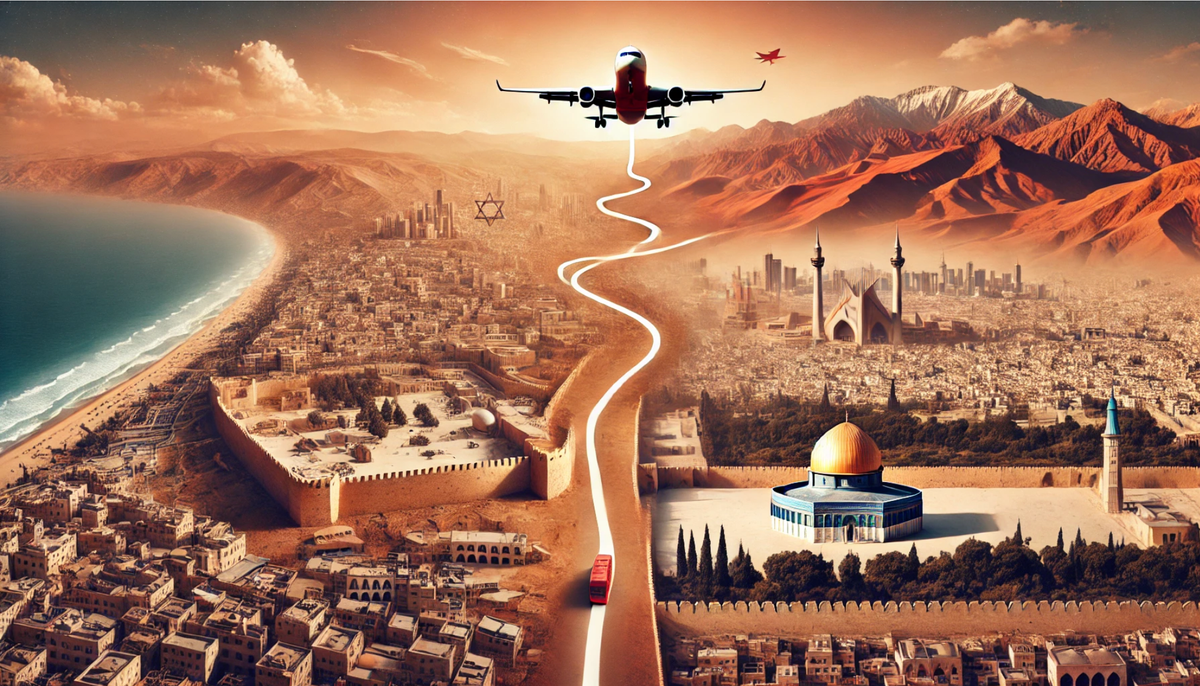
7. Iran’s Exportation of Antisemitism through Proxy Groups
Iran’s use of proxy groups such as Hezbollah in Lebanon and Hamas in Gaza has been central to its foreign policy strategy of exporting antisemitism and waging a proxy war against Israel. These groups receive financial and military support from Tehran and serve as the regime’s front line in its ongoing battle to destabilize Israel and the region (Levitt, 2013).
However, this strategy has increasingly backfired. The signing of the Abraham Accords in 2020 marked a major geopolitical shift in the Middle East, as several Arab states, including the UAE and Bahrain, normalized relations with Israel. These agreements illustrate how Iran’s aggressive foreign policy has failed to isolate Israel and has instead left Tehran more isolated within the region.
The growing willingness of Arab nations to engage diplomatically and economically with Israel underscores the failure of Iran’s ideological project. While the regime continues to back proxy wars, many of its neighbors have opted for peace and cooperation, further undermining Khomeini’s vision of leading a united Muslim world against Israel.
8. The Theological Schism within Shia Islam
Khomeini’s vision was a radical departure from traditional Shia thought, emphasizing the separation of religious authority from political power. Historically, Shia clerics (marja) served as spiritual advisors rather than political rulers. Khomeini’s decision to merge religious and political authority by granting supreme power to the jurist was met with resistance from traditionalist Shia clerics, many of whom still reject the idea of clerical rule (Momen, 1985).
This theological schism has created significant tension within the Shia clerical establishment, both in Iran and Iraq. Traditionalist clerics continue to argue that Khomeini’s vision distorts the core principles of Shia Islam, and they have resisted the Iranian regime’s attempts to assert religious-political control over their communities. This internal conflict undermines the legitimacy of Khomeini's vision, as it reveals deep divisions within Shia religious thought about the proper role of clerics in governance.
9. The Failure of the Martyrdom Narrative
The glorification of martyrdom has been a central component of Khomeini’s ideology. The regime frequently invokes the legacy of Husayn’s martyrdom at Karbala to inspire Iranians to sacrifice themselves for the cause of the Islamic Republic. However, this narrative has lost much of its resonance with the younger generation, who are increasingly disillusioned by the regime’s insistence on endless sacrifice (Khosrokhavar, 2015).
Iran’s youth, faced with economic hardship, lack of opportunity, and political repression, are growing weary of the regime’s calls for martyrdom. The promise of victory through self-sacrifice now rings hollow for many, particularly as the regime has failed to deliver on its promises of justice and prosperity. This disillusionment significantly challenges the regime’s ability to maintain support, particularly among the younger population.
10. Israel’s Technological and Diplomatic Ascendancy
While Iran’s ideological project has failed, Israel has grown stronger. Israel’s advancements in cybersecurity, missile defense (e.g., the Iron Dome), and intelligence have made it a regional power capable of neutralizing many of the threats posed by Iranian-backed militias (Inbar & Shavit, 2013). Moreover, Israel’s diplomatic success through the Abraham Accords has reshaped the political landscape of the Middle East, leaving Iran increasingly isolated.
The Abraham Accords represent a significant diplomatic victory for Israel, highlighting the failure of Iran’s resistance strategy. While Iran has poured resources into proxy wars and militant groups, Israel has focused on building alliances and strengthening its economy and military. The growing normalization of relations between Israel and Arab states further isolates Iran, exposing the futility of its antisemitic and anti-Israel rhetoric.
Conclusion: A Vision in Ruins, But What Comes Next for Iran?
Khomeini’s vision for the Islamic Republic, built on the twin pillars of Wilayat al-Faqih and antisemitism, has failed at nearly every level. Domestically, the regime faces unprecedented opposition from its people, particularly women, who have risen against the patriarchal, theocratic system that has oppressed them for over four decades. The widespread rejection of Islam, the rise of Christianity, and the economic collapse have further weakened the regime’s legitimacy. Internationally, Iran’s obsession with Israel has failed to weaken the Jewish state and has instead isolated Iran diplomatically, particularly as Arab states begin to normalize relations with Israel through the Abraham Accords.
But what comes next for Iran? The regime's future remains uncertain, but several potential scenarios could unfold, each with profound implications for Iran and the broader Middle East.
Scenario 1: Gradual Reform
One possibility is that the regime will adapt to internal and external pressures by initiating gradual reforms. This could involve relaxing some of the more draconian aspects of the Governance of the Jurists (Wilayat al-Faqih) system, such as easing restrictions on personal freedoms, scaling back the influence of the IRGC in political and economic matters, and allowing for more political pluralism.
There is precedent for this type of reform. In the 1990s, under President Mohammad Khatami, a period of reform saw a loosening of cultural and political restrictions. If the regime were to pursue a similar course of action, it could potentially regain some domestic legitimacy and alleviate international sanctions. However, for any meaningful reform to occur, the regime must contend with hardline elements within its ranks, particularly the IRGC and the conservative clerics who have benefited from the current system.
Scenario 2: Continued Repression and Authoritarianism
A more likely scenario, given the current trajectory of the regime, is the continuation of repression and authoritarianism. The Iranian leadership, particularly under Supreme Leader Ali Khamenei, has shown little willingness to compromise or reform. The regime may double down on its use of force, continuing to suppress protests, arrest dissidents, and control the population through fear and censorship.
This strategy, however, is unlikely to solve the deeper structural problems driving opposition to the regime. Continued repression may temporarily suppress dissent, but it will not address the underlying economic, social, and political grievances that millions of Iranians are expressing. Over time, this could lead to increased unrest, with protests becoming more frequent, widespread, and violent. The regime may find itself in a cycle of repression and revolt, each wave of protests more determined and less willing to compromise.
Scenario 3: Revolution and Collapse
The most dramatic scenario is the potential collapse of the regime through revolution. While the Iranian government has thus far been able to suppress major uprisings, the conditions for a larger, more coordinated revolution are increasingly present. The protests led by women in 2022, the mass disillusionment with Islam, and the widespread economic hardship suggest that a significant portion of the population no longer sees the regime as legitimate.
Revolutions are difficult to predict, but if the regime continues to ignore its people's demands, it may face a tipping point where the combination of internal dissent and external pressures forces its collapse. A revolution in Iran would have profound implications for the Middle East. It could lead to the emergence of a more secular, democratic government or result in further instability as various factions vie for power in a post-theocratic Iran.
Additionally, a collapse of the regime could embolden separatist movements within Iran, particularly among the Kurds, Azeris, and Baluchis, potentially leading to the fragmentation of the country. The international community, particularly regional powers like Turkey, Saudi Arabia, and Israel, would likely intervene to shape the outcome of such a revolution, adding to the situation's complexity.
Scenario 4: Hybrid Model of Reform and Repression
A more nuanced scenario might involve a combination of reform and repression, where the regime makes superficial concessions to placate the population while maintaining strict control over the most sensitive aspects of governance. This could include limited economic reforms to ease public discontent while keeping the IRGC and hardline clerics in positions of power.
In this scenario, the regime would aim to manage dissent by allowing certain social and cultural freedoms while stifling political opposition. This approach could extend the regime’s longevity but would be a precarious balance. If reforms are seen as too weak or insincere, they may fuel further protests. On the other hand, if repression continues unchecked, it could lead to a more organized and united opposition.
A Fragile Future for Iran
Ultimately, Iran’s future remains uncertain, and much will depend on how the regime responds to the growing pressures it faces from within and outside the country. The regime’s survival will likely hinge on its ability to adapt to changing domestic and international realities. Whether through reform, repression, revolution, or some combination thereof, the Islamic Republic stands at a crossroads, and its next steps will have profound consequences for the region and the world.
For now, the cracks in Khomeini’s vision are too deep to ignore. The failure of the Governance of the Jurists (Wilayat al-Faqih) has led to a loss of faith, both in the Islamic Republic and in the broader promise of political Islam. As Iran continues to grapple with internal dissent and international isolation, the regime must confront the reality that Khomeini’s dream has become a nightmare for millions of Iranians. Whether the regime can reform in time to save itself or whether it is headed for inevitable collapse remains to be seen.
References
Alfoneh, A. (2020). Iran Unveiled: How the Revolutionary Guards Is Transforming Iran from Theocracy into Military Dictatorship. AEI Press.
GAMAAN. (2020). The Secular Shift: Religion and Public Opinion in Iran. GAMAAN.
Garrison, D. (2014). A Wind in the House of Islam: How God Is Drawing Muslims Around the World to Faith in Jesus Christ. WIGTake Resources.
Inbar, E., & Shavit, A. (2013). Israel’s National Security: Issues and Challenges since the Yom Kippur War. Routledge.
Kar, M. (2022). The Women's Movement in Iran: Gender and the Islamic Republic. Bloomsbury Academic.
Khosrokhavar, F. (2015). Iranian Youth in Search of a Future: The Story of Iran’s New Martyrs. Cambridge University Press.
Khomeini, R. (1981). Hukumat-e Islami: Velayat-e Faqih (Islamic Government: Governance of the Jurist). Islamic Publications International.
Levitt, M. (2013). Hezbollah: The Global Footprint of Lebanon's Party of God. Georgetown University Press.
Litvak, M. (2006). The Islamization of Antisemitism: Islamic Antisemitism in Historical Context. Journal of Middle Eastern Studies, 38(4), 123-144.
Momen, M. (1985). An Introduction to Shi'i Islam: The History and Doctrines of Twelver Shi'ism. Yale University Press.
Vaez, A., & Sadjadpour, K. (2021). Iran’s Deadlock and Future Scenarios. Carnegie Endowment for International Peace.
Tim Orr is a scholar, Evangelical minister, conference speaker, and interfaith consultant with over 30 years of experience in cross-cultural ministry. He holds six degrees, including a master’s in Islamic studies from the Islamic College in London. Tim taught Religious Studies for 15 years at Indiana University Columbus and is now a Congregations and Polarization Project research associate at the Center for the Study of Religion and American Culture at Indiana University Indianapolis. He has spoken at universities, including Oxford University, the University of Tehran, and mosques throughout the U.K. His research focuses on American Evangelicalism, Islamic antisemitism, and Islamic feminism, and he has published widely, including articles in Islamic peer-reviewed journals and three books.
Check out Dr. Orr's other articles
 Dr. Tim Orr's BlogKevin Martinez
Dr. Tim Orr's BlogKevin Martinez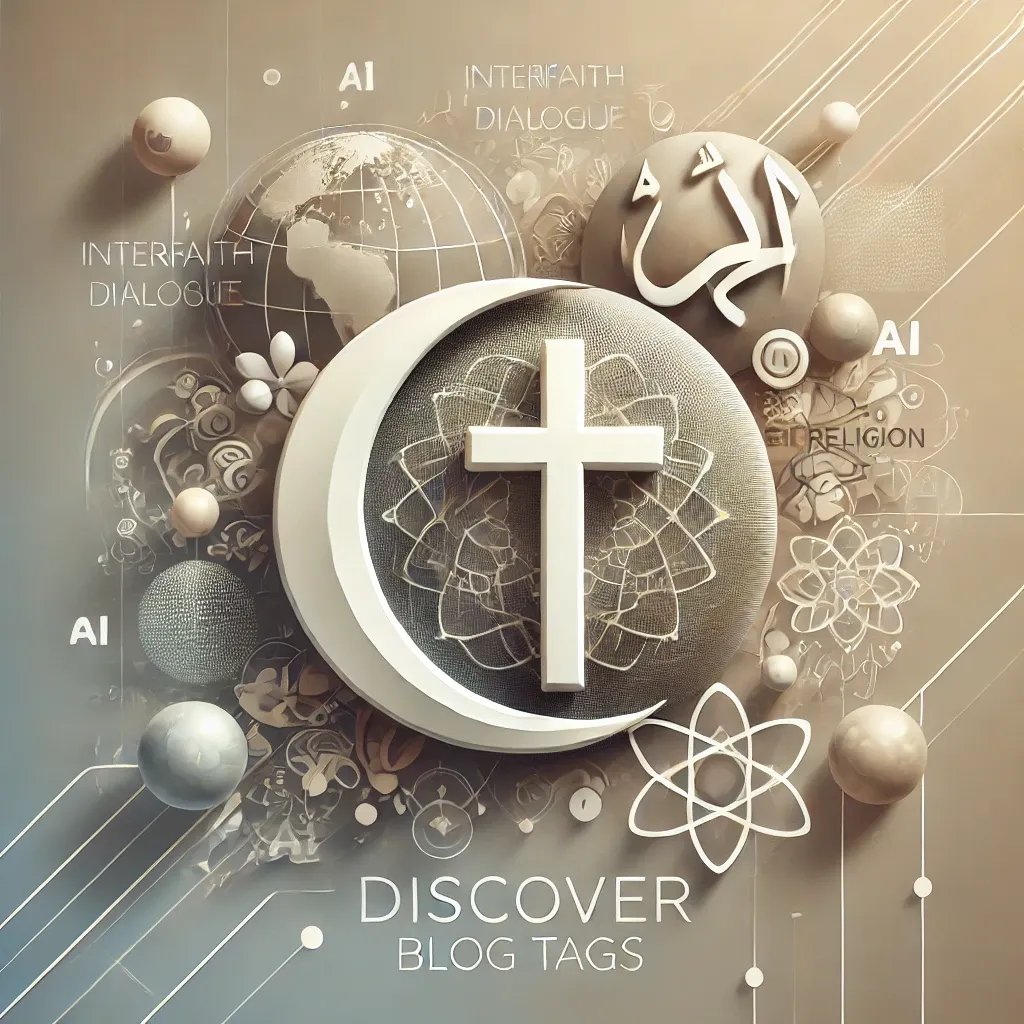
Check out Dr. Orr's YouTube Channel
 YouTube
YouTube
Sign up for Dr. Tim Orr's Blog
Dr. Tim Orr isn't just your average academic—he's a passionate advocate for interreligious dialogue, a seasoned academic, and an ordained Evangelical minister with a unique vision.
No spam. Unsubscribe anytime.
